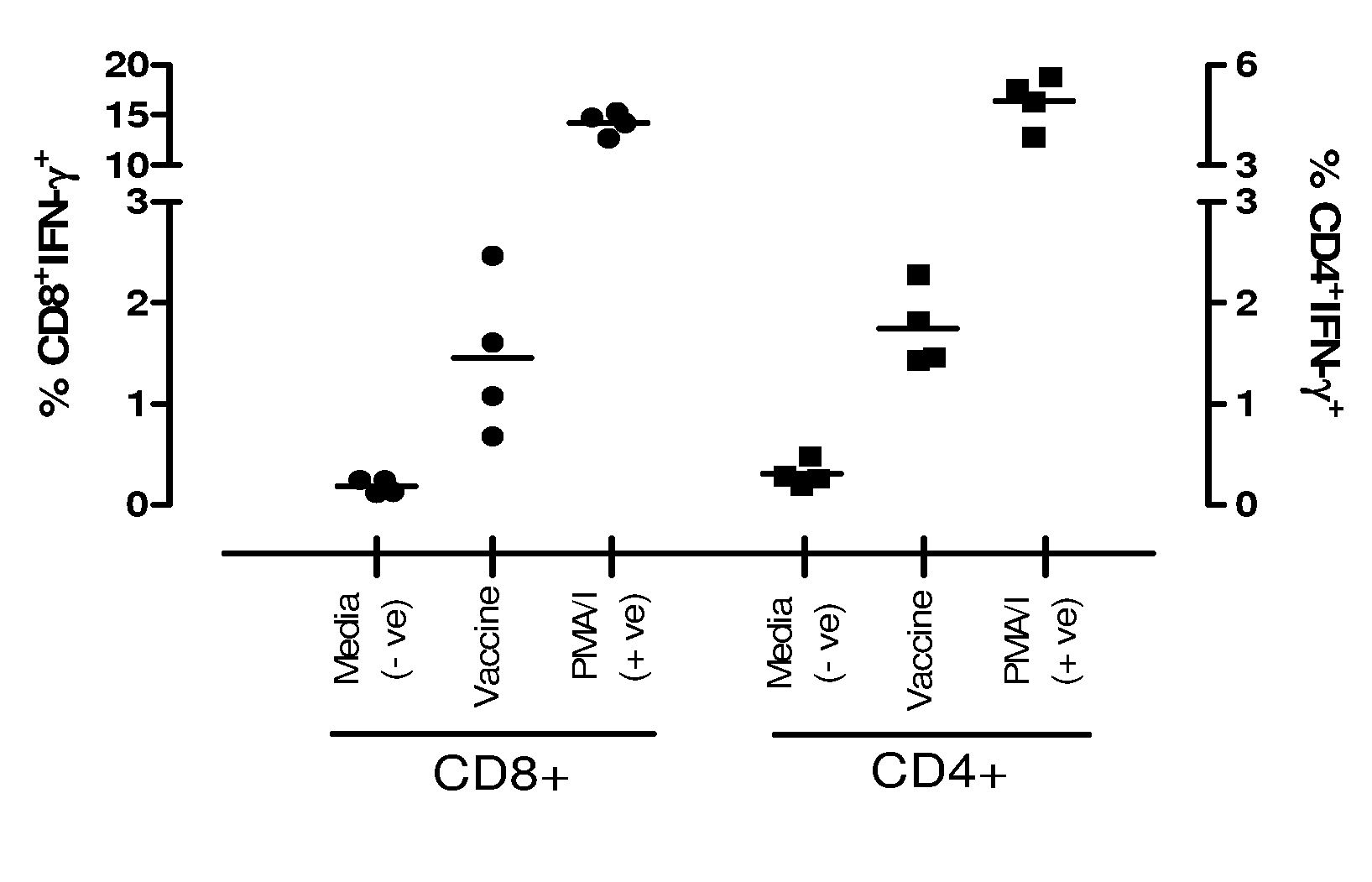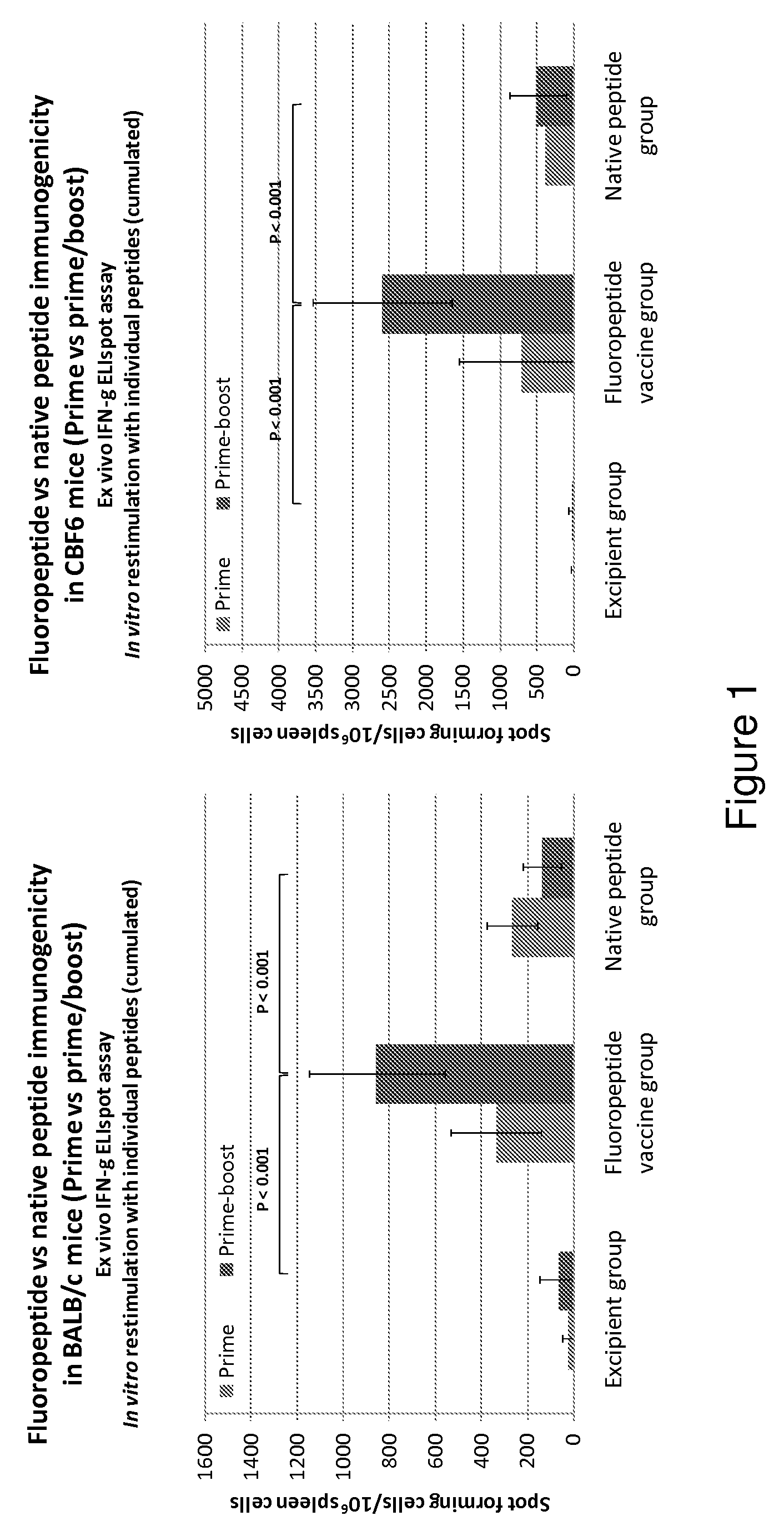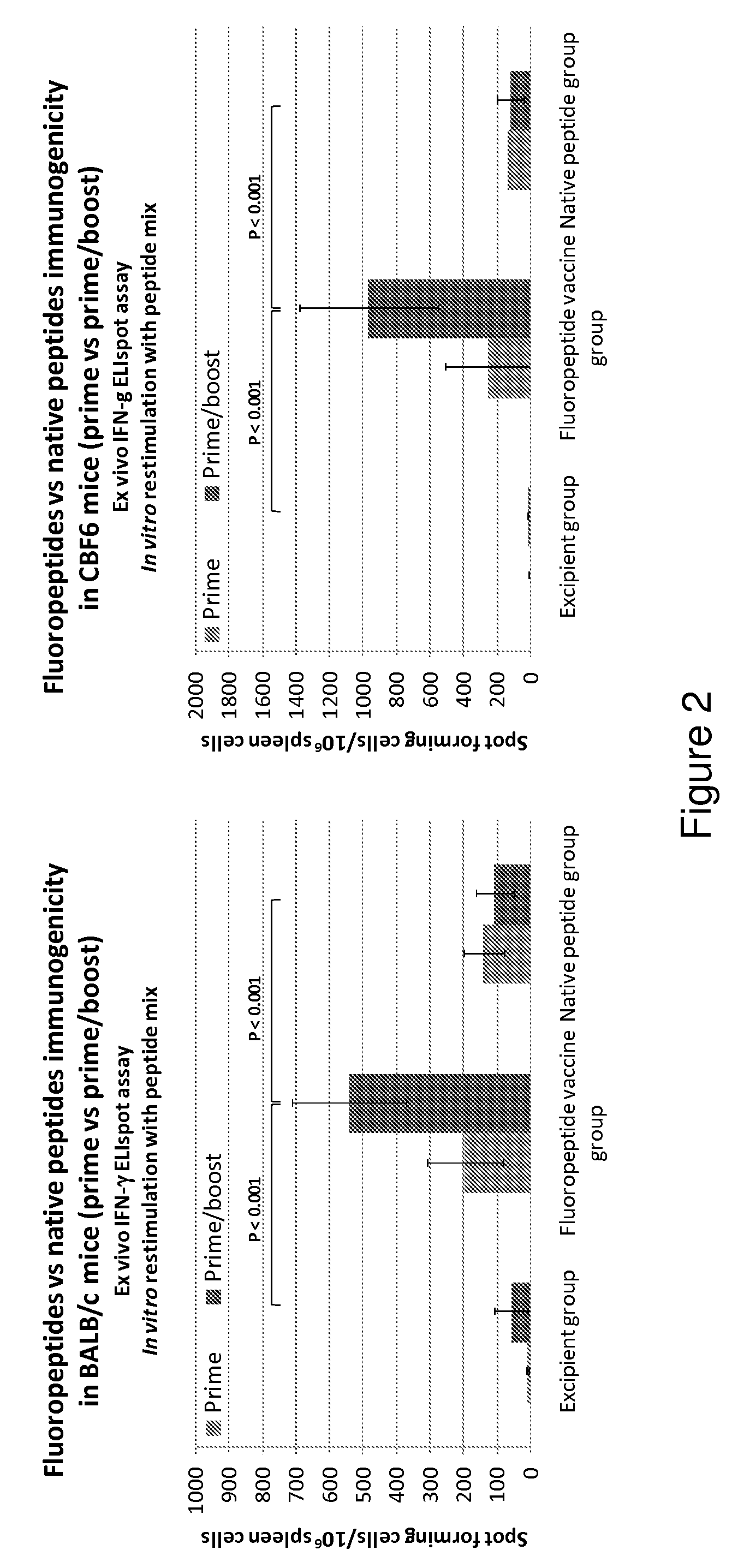Influenza antigen delivery vectors and constructs
a technology of influenza antigen and vector, applied in the field of fluorocarbon vectors, can solve the problems of affecting the immunogenicity of vaccines, affecting the safety of vaccines, so as to enhance the immunogenicity and enhance the effect of the effect of the vaccin
- Summary
- Abstract
- Description
- Claims
- Application Information
AI Technical Summary
Benefits of technology
Problems solved by technology
Method used
Image
Examples
example 1
Example Peptides
[0138]Candidates for conjugating to a fluorocarbon vector for inclusion into a prophylactic or therapeutic vaccine for influenza may include the following one or more peptides or fragments thereof, or homologues (including the corresponding consensus, ancestral or central tree sequences as referred to in the Los Alamos National Laboratory influenza sequence database (Macken, C., Lu, H., Goodman, J., & Boykin, L., “The value of a database in surveillance and vaccine selection.” in Options for the Control of Influenza IV. A. D. M. E. Osterhaus, N. Cox & A. W. Hampson (Eds.) 2001, 103-106.) or Influenza virus resources at NCBI) or natural and non-natural variants thereof, but not necessarily exclusively. Specific examples of appropriate peptides are given below where the standard one letter code has been utilized. Homologues have at least a 50% identity compared to a reference sequence. Preferably a homologue has 80, 85, 90, 95, 98 or 99% identity to a naturally occurri...
example 2
Immune Responses Elicited by Fluoropeptide Vaccination are Boosted by Combination with Adjuvant
[0153]Immunogenicity of the fluoropeptide vaccine (mixture of 8 fluoropeptides as above) was compared with immunogenicity of the fluoropeptide vaccine in the presence of an adjuvant, Freund's complete adjuvant (FCA). Fluoropeptide vaccine (1 nmol / peptide) or fluoropeptide vaccine (1 nmol / peptide) emulsified in CFA was used to immunize BALB / c mice. 10 days after the immunization, splenocytes were stimulated with individual peptides at 10 μg / ml. 48 hours later culture supernatants were collected and tested for cytokines using a multiplex cytokine assay (CBA). Results show that using an CFA as an additional adjuvant can significantly boost Th1 cytokine production (IFN-γ and IL-2) without effecting the production of Th2 cytokines (IL-4, IL-5) (FIG. 6). Therefore Th1 responses induced by fluoropeptide vaccination are preferentially boosted by combination with adjuvant during immunization.
Both S...
PUM
| Property | Measurement | Unit |
|---|---|---|
| length | aaaaa | aaaaa |
| diameter | aaaaa | aaaaa |
| temperature | aaaaa | aaaaa |
Abstract
Description
Claims
Application Information
 Login to View More
Login to View More - R&D
- Intellectual Property
- Life Sciences
- Materials
- Tech Scout
- Unparalleled Data Quality
- Higher Quality Content
- 60% Fewer Hallucinations
Browse by: Latest US Patents, China's latest patents, Technical Efficacy Thesaurus, Application Domain, Technology Topic, Popular Technical Reports.
© 2025 PatSnap. All rights reserved.Legal|Privacy policy|Modern Slavery Act Transparency Statement|Sitemap|About US| Contact US: help@patsnap.com



